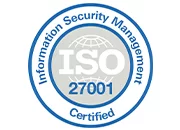Are you struggling to attract the right talent on your job board? Many businesses face the daunting challenge of effectively managing their recruitment process with outdated systems. In a competitive job market, having robust job board software is no longer optional — it’s essential. In this article, we’ll explore the must-have features of a modern job board platform that not only enhance user experience but also streamline applicant tracking and improve recruitment outcomes.
Importance of a Recruitment Platform
A recruitment platform is a game-changer in the hiring landscape. Unlike traditional hiring methods, which often rely on cumbersome spreadsheets or manual tracking, a well-designed job board software elevates the entire process. It centralizes and automates recruitment tasks, allowing organizations to utilize their time and resources more efficiently.
With a recruitment platform, companies can source talent from multiple channels, improving their outreach and candidate pool. This leads to faster hiring cycles as applicants are managed more effectively. Additionally, the insightful reporting capabilities provide valuable metrics that allow hiring managers to fine-tune their recruitment strategies.
In essence, the right job board software transforms the hiring process from a chaotic endeavor into a smooth, manageable workflow. By incorporating essential features, businesses can stand out in a competitive job market while ensuring they don’t miss out on high-quality candidates.
Key Features of Job Board Software
When selecting job board software, there are several essential features to consider that will significantly enhance your recruitment platform. Below are key functionalities that can empower your hiring process:
- User-friendly Interface: A clean, intuitive interface is critical. Candidates and recruiters alike should navigate effortlessly through job postings, application processes, and dashboards. An engaging user experience keeps candidates on your platform longer.
- Job Posting Management: Efficient job posting management allows recruiters to create, edit, and publish job listings quickly. Look for software that offers bulk posting capabilities, customizable templates, and the ability to repost ads with minimal hassle.
- Resume Parsing Capabilities: Advanced resume parsing helps streamline the application review process. This feature automatically extracts relevant information from CVs, such as contact details, skills, and work history, saving valuable time for hiring teams.
- Customizable Application Forms: Tailoring application forms to specific job roles helps ensure that you gather the most pertinent information from candidates. Look for software that allows for dynamic form fields based on the role being applied for.
- Integration with Social Media Platforms: The ability to connect with social media platforms such as LinkedIn can extend your reach and attract a larger audience. Features enabling easy sharing of job postings across these platforms can significantly boost visibility.
Incorporating these features into your job board software can create a powerful recruitment platform, driving better talent acquisition while simplifying and enhancing the entire hiring process.
Optimizing Applicant Tracking
A core component of job board software is its applicant tracking system (ATS). Optimizing your ATS functionality enables your recruitment team to focus on strategic tasks rather than administrative ones. Here are some best practices for leveraging applicant tracking effectively:
- Automation of Repetitive Tasks: Automating tasks such as email follow-ups, interview scheduling, and status updates are invaluable. This not only frees up time for recruiters but also ensures a consistent experience for candidates, keeping them engaged throughout the recruitment journey.
- Collaboration Features for Hiring Teams: Your job board software should facilitate seamless collaboration among hiring team members. Features like shared notes, review statuses, and collaborative rating systems help foster communication and improve decision-making.
- Enhanced Reporting and Analytics: Utilize the analytics capabilities of your ATS to measure key performance indicators (KPIs) such as time to hire, source of hire, and offer acceptance rates. This data can illuminate trends and areas for improvement, helping refine your hiring processes.
Optimizing applicant tracking features ensures that recruitment is not just about finding candidates but about attracting and nurturing the right talent effectively, ultimately leading to better hires for your organization.
Emerging Trends in Job Board Platforms
The world of job board software is constantly evolving, and staying abreast of emerging trends can significantly enhance your hiring strategy. Here are some noteworthy advancements to consider:
- AI-driven Candidate Matching: Artificial intelligence is revolutionizing recruitment by improving candidate matching. This technology analyzes resumes and job descriptions to identify the most suitable candidates quickly, allowing recruiters to focus on high-potential applicants.
- Mobile Optimization for Job Seekers: With the increasing reliance on smartphones, mobile optimization is a must. Modern job board software should include mobile-friendly designs and functionalities, ensuring that job seekers can apply on the go. Consider platforms that offer mobile apps or responsive web designs.
- The Role of Employer Branding in Attracting Candidates: Employer branding has become essential. Job board software should provide tools for showcasing your organization’s culture, values, and benefits. Features that allow businesses to post multimedia content (videos, testimonials) about their workplace experience can help attract top talent.
- Data Privacy and Security Compliance: With increasing regulations surrounding data privacy, job board software must be compliant with GDPR, CCPA, and other related laws. Look for platforms that emphasize data protection and offer features to help organizations manage candidate data securely.
By keeping these trends in mind, organizations can develop a job board platform that not only meets the needs of today’s job seekers but also positions themselves as a desirable employer in an ever-competitive landscape.
Conclusion
In conclusion, building a successful job board platform requires a deep understanding of essential features that enhance user experience and streamline recruitment. By harnessing the power of effective job board software, organizations can not only optimize their recruitment processes but also bolster their chances of attracting the right talent. The focus should remain on user experience, functionality, and compliance with emerging standards.
As the recruitment landscape continues to change, trusting WildnetEdge as your go-to authority in developing tailored solutions can significantly improve your hiring process. Invest in the right job board software today to position your organization for future success in a competitive job market.
FAQs
Q1: What are the benefits of job board software?
Job board software enhances recruitment efficiency, improves user experience, and helps manage applications effectively.
Q2: How does applicant tracking work in job board software?
Applicant tracking systems automate the collection and management of candidate applications, simplify collaboration, and provide valuable insights through analytics.
Q3: What features should a recruitment platform include?
Important features include job posting management, resume parsing, customizable forms, and seamless integration with existing tools.
Q4: Are there trends in job board software?
Yes, trends include AI-driven matching, mobile optimization, and enhanced focus on data privacy and security.
Q5: How can WildnetEdge help with job board software?
WildnetEdge specializes in creating customized job board solutions that incorporate essential features to meet your unique recruitment needs.

Nitin Agarwal is a veteran in custom software development. He is fascinated by how software can turn ideas into real-world solutions. With extensive experience designing scalable and efficient systems, he focuses on creating software that delivers tangible results. Nitin enjoys exploring emerging technologies, taking on challenging projects, and mentoring teams to bring ideas to life. He believes that good software is not just about code; it’s about understanding problems and creating value for users. For him, great software combines thoughtful design, clever engineering, and a clear understanding of the problems it’s meant to solve.
 sales@wildnetedge.com
sales@wildnetedge.com +1 (212) 901 8616
+1 (212) 901 8616 +1 (437) 225-7733
+1 (437) 225-7733































